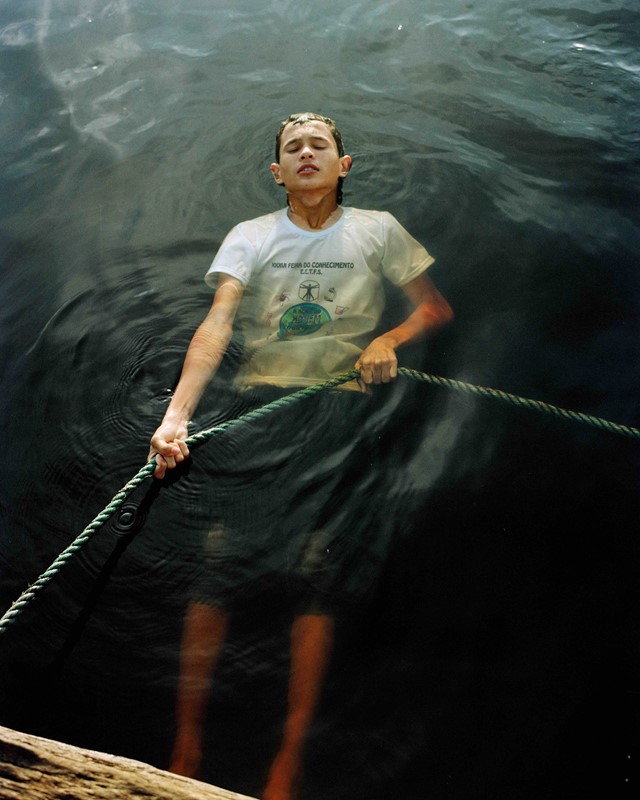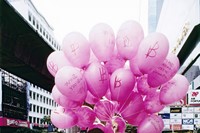As the Jimei x Arles International Photo Festival kicks off in Xiamen, China, AnOther speaks with five photographers about their work, which unpicks ideas around gender, capitalism, family and much more
“We see what is going on in the world through the eyes of others,” considers the artist Weiyi Li, “oblivious to the fact that the posture and perspective of observers and how images are used to communicate are also important.” Selected by curator Liu Gang, Weiyi is one of ten Chinese photographers nominated for the Discovery Award at this year’s Jimei x Arles International Photo Festival, the sister fair to the renowned French photography festival that takes place in the south of France each summer.
Founded in 2015 with the principle of championing Chinese photography, promoting contemporary Asian image-makers, and “synchronising with the freshest international vision,” since 2020 the Xiamen-based festival has been co-directed by Christoph Wiesner and RongRong, the director of Les Rencontres d’Arles and the co-founder of Three Shadows Photography Art Centre, China’s first photography-exclusive art space, respectively – photography critic Gu Zheng also serves as art director.
Last week the eighth edition of the festival opened in the city’s Jimei district, presenting some 30 exhibitions from mainland China and the rest of Asia, as well as a few notable additions previously displayed at the fair’s French iteration. Below, five participating photographers speak to AnOther about their work.
Daniel Jack Lyons (Like a River) – lead image
Daniel Jack Lyons’ practice is shaped by collaboration and open dialogue. As a queer photographer, community is a key entry point, and for Like a River, shot between 2019 and 2021 along the Tupana river in the Brazilian Amazon, the intimate friendships he formed determined the work’s warm familiarity. “At the core, this project is about challenging expectations and general assumptions about Indigenous life in the Brazilian Amazon. In particular, exploring how deep indigenous traditions and modern identity politics meet in a celebratory, safe space, against the contrasting backdrop of environmental degradation, violence, and discrimination,” he explains. First shown in France earlier this year, exhibiting the series in Xiamen feels especially powerful for the photographer. “Being able to show this work in a country known for its strict censorship laws and antagonism toward queer communities feels important. I’m very pleased to think that a queer person in China may see this work and feel a connection to community on the other side of the world. The power of visibility is not to be underestimated.”

Greg Lin Jiajie (Longyan Boys)
“The way I see photography is not only as a medium but also as a profoundly personal and emotional experience,” says London-based photographer Greg Lin Jiajie, alluding to his series Longyan Boys. Shot over two years in 2020 and 2021 in his hometown of Longyan in China’s Fujian province, the deeply autobiographical project was created with his identical twin brother as a way to resolve past experiences and access a new intimacy. “Growing up I was constantly compared with my brother, tired of being ‘one of the two’, I was desperate for a way out to carve my own identity,” says Greg. “At 16, I journeyed solo to New Zealand, and after years of separation I found the independence I was seeking. Realising it cost me our relationship, Longyan Boys is an attempt to reconnect and mend some of the fences.” Exhibited in Xiamen as part of the Local Action group show Them, the festival’s proximity to the photographer’s home city is particularly significant, he says. “It’s an honour to be showing my work at the festival, and to be able to tell the story of Longyan Boys, especially in our home province Fujian. It really means a great deal to me.”
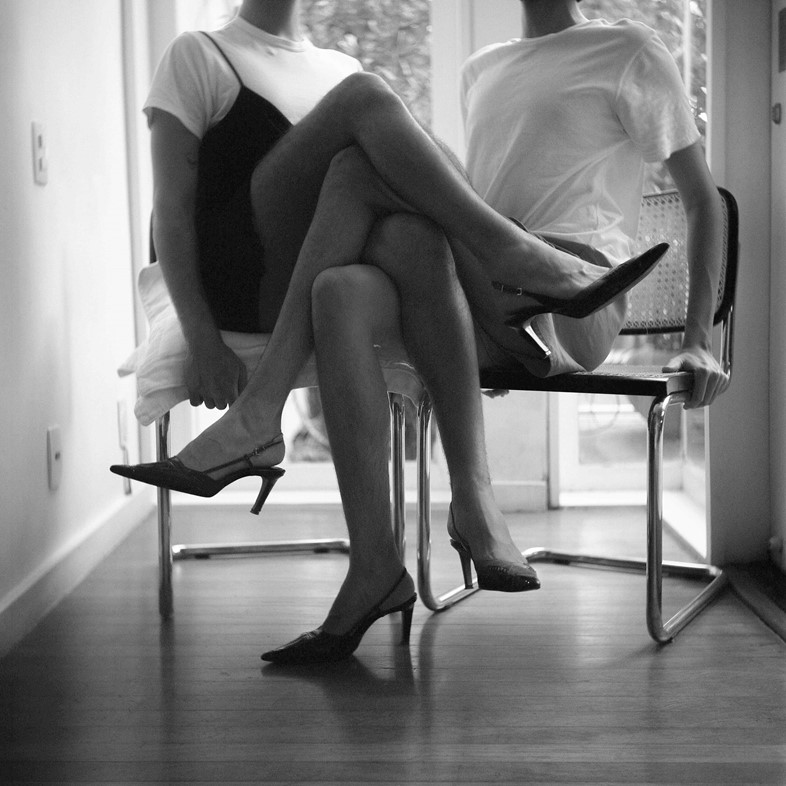
Gal Cipreste Marinelli and Rodrigo Masina Pinheiro (GH, Gal and Hiroshima)
Brazilian duo Gal Cipreste Marinelli and Rodrigo Masina Pinheiro make work that questions gender and explores personal histories, engaging with autobiographical topics across their practice, which includes sculpture as well as photography. First exhibited at Arles in July, the series GH, Gal and Hiroshima – Hiroshima is an old family nickname, acquired on account of Rodrigo’s August birthday – was largely made during the pandemic. “We’re living together during all of these processes, retelling the gender violence that happened and happens to us. This was a mutual mechanism of protection and affection that allowed us to think these images and make them some kind of weapons,” they tell AnOther, alluding to the black-and-white series that includes solo portraits and depictions of the two artists in high heels. “Our presence at the Jimei x Arles festival is a conversation about gender violence and trans existence,” they continue, “[we want to] stimulate other LGBTQIA+ autobiographies to be told, get out of compulsory silence and be photographed.”
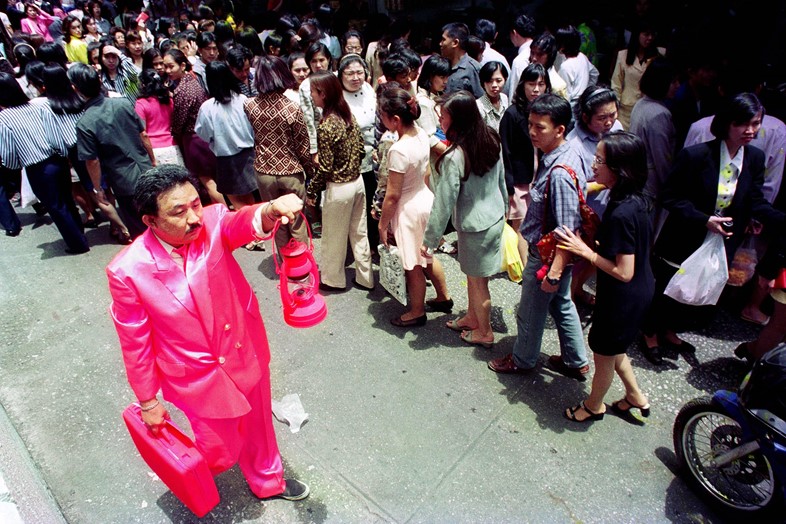
Manit Sriwanichpoom (Pink Man)
Thai photo-artist Manit Sriwanichpoom began making his Pink Man series in 1997, photographing Somopong Thawee in a silk tuxedo and matching fluorescent shopping cart in Bangkok’s La-Lai-Sap market for Pink Man Begins. “I created Pink Man to represent my criticism of capitalism and consumerism,” he tells AnOther. “I put him in many locations and situations that provoked dialogues between audiences and artworks.” In the years since, Manit has shot Pink Man at tourist locations around Thailand and across Europe – in 1998 and 2000, for Pink Man on Tour and Pink Man on European Tour respectively – while the work has been exhibited internationally. Showcased at Jimei x Arles as part of Greetings From Thailand, the Ark Fongsmut-curated exhibition Memorandum: Within or Without will further highlight the artist’s long-term focus on societal spending. “This is probably the only photo festival in China that has a space and programme for Asian photography,” he continues, noting the fair’s gravity. “It’s really nice and important for Chinese audiences to learn more about their Asian neighbouring countries’ photography. Photography is also a form of culture.”
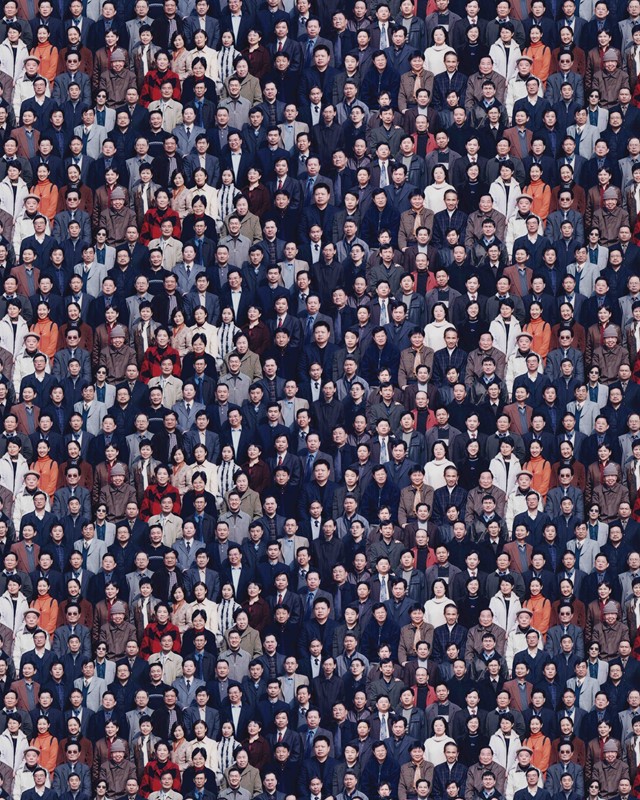
Weiyi Li (Family Album)
For Weiyi Li, the group photo – “a visual technique commonly employed and even overlooked” – is also a portal into possibility. Interested in the way people make things and what it says about who we are, in 2012 Weiyi began work on The Family Album Project II, an online installation of images that has since changed shape and spread in various ways, with collaborations with schools, galleries and brands. Exhibited as a ten-year retrospective at this year’s festival, the project’s latest incarnation is a floor to ceiling display. “It was based on my family albums, photographs that show a monumental form and a desire for the collective,” she explains. “I strengthened this strong visual grammar by converting all of the group photos in my family album into seamless images, using simple HTML code to transform the crowd in each photo into an endless sea of people. The group photo is a well-known pictorial pattern, which I attempt to purify, allowing its power to reach maximum potential.”
The Jimei x Arles 2022 International Photo Festival is on in Xiamen, China until 3 January 2023.
